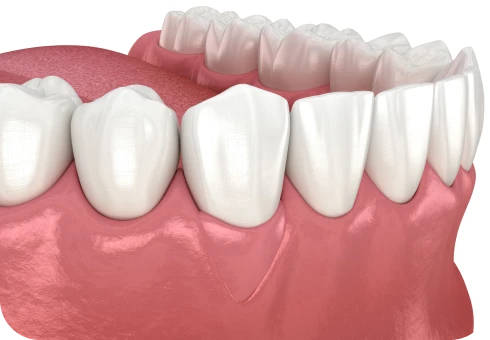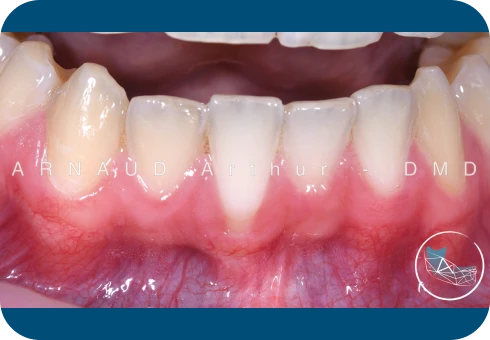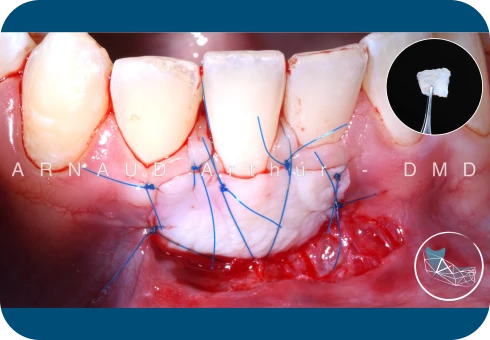Gingival grafting
Gingival grafting is a surgical procedure designed to strengthen and restore the gum tissue around natural teeth or dental implants. It is generally used to treat
Why perform a gingival graft around teeth or implants?
Gums play an essential role in protecting teeth and implants, keeping them stable and guarding against infection. Gingival recession or insufficient gum tissue around implants can lead to :
- Sensitive teeth or pain due to root exposure.
- Increased risk of caries on the roots of exposed teeth.
- Loss of implant stability if the gums do not support the implant properly – the implant loosens.
- Inflammation or peri-implant infection, as improper cleaning can lead to implant failure.

Gingival grafting corrects these problems by increasing gingival thickness, protecting tooth roots and providing sufficient coverage around implants.
How is a gingival graft performed?
- Consultation and diagnosis: Dr. Arnaud assesses the condition of the gingiva around teeth and implants to determine the need for grafting. Imaging studies may be performed to confirm gingival recession or insufficient bone around implants.
- Gingival grafting surgery: The surgeon removes a piece of gingival tissue (usually from the palate) or uses a specific grafting material, then applies it to the area of gingival recession or around implants. The tissue is then sutured in place to ensure optimal integration.
- Healing period: In the weeks following the procedure, the grafted tissue integrates with the existing gingiva, strengthening the treated area. Regular check-ups are necessary to monitor healing and final appearance (which may take 6 months to 1 year).
Who should consider gingival grafting around implants?
Gingival grafting is recommended for patients with advanced gingival recession around teeth or implants, or for those with implants surrounded by insufficient gingival tissue. It is particularly beneficial for people at risk of peri-implantitis or increased tooth sensitivity due to thin gums.
In some patients who have lost one or more teeth over the years, the gums tend to melt away. In such cases, a gum graft must be performed before or after the dental implant is placed, to prevent the implant from loosening over time.
Follow-up and care after gingival grafting
After the operation, post-operative care is necessary to ensure proper healing and avoid infection. It is advisable to avoid touching the grafted area to avoid pulling on the sutures, to maintain rigorous oral hygiene, and to follow Dr. Arnaud’s advice on diet and care products. Regular check-ups are also important to verify the integration of the grafted gingiva.

